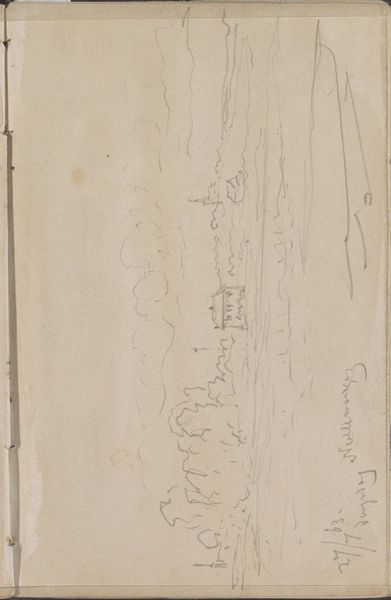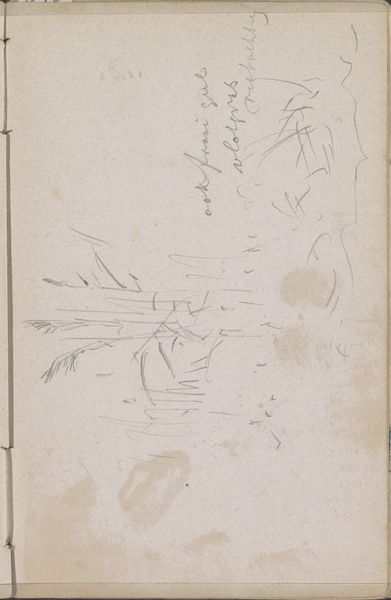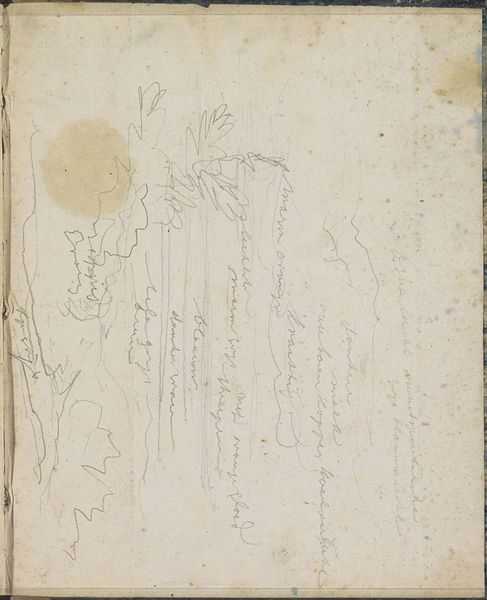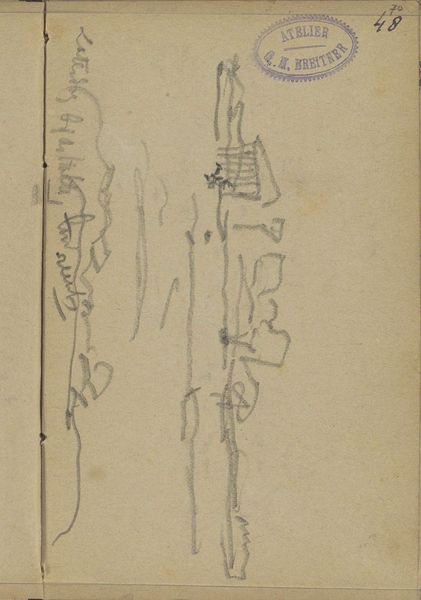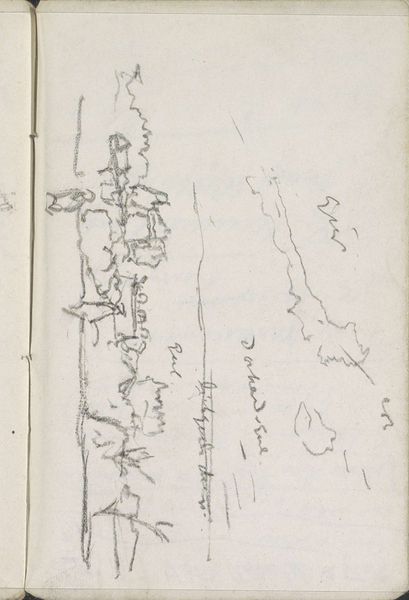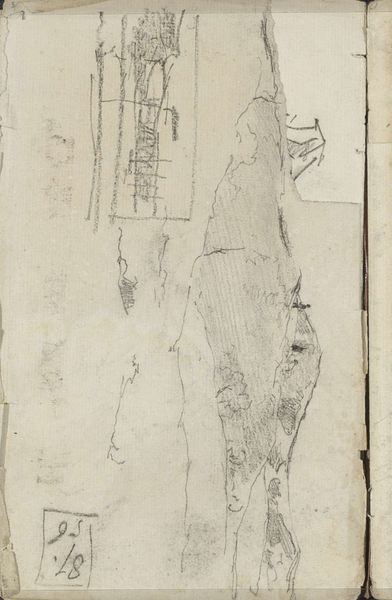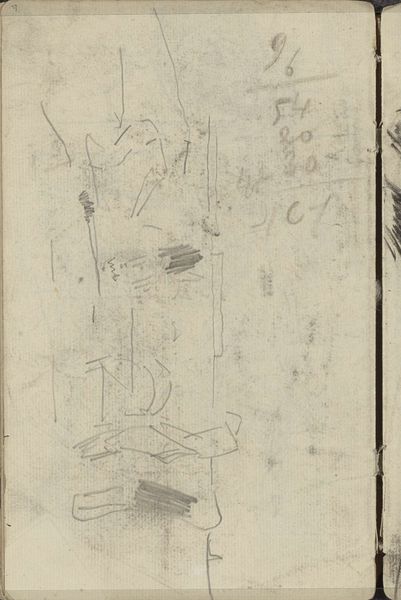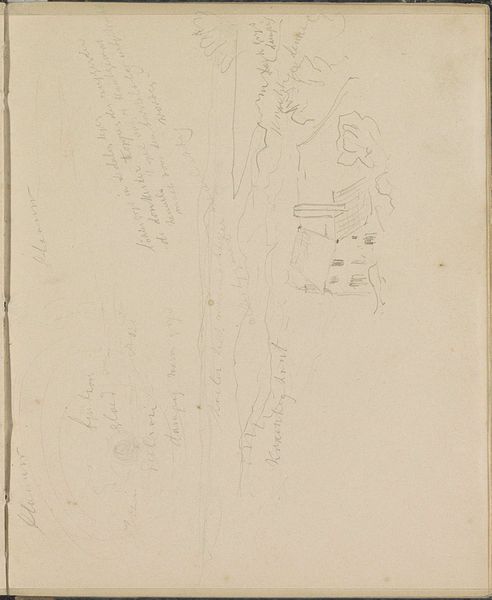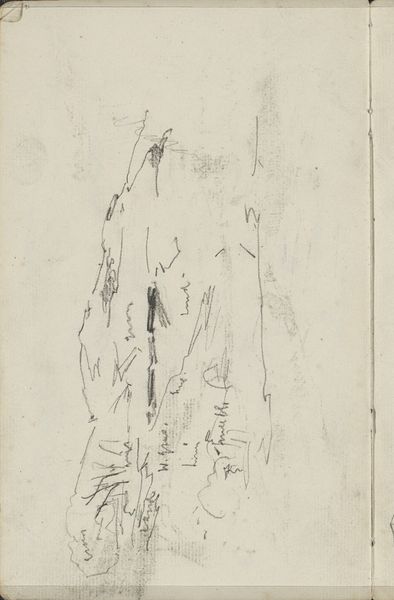
drawing, pencil
#
drawing
#
light pencil work
#
sketch book
#
incomplete sketchy
#
landscape
#
personal sketchbook
#
idea generation sketch
#
sketchwork
#
ink drawing experimentation
#
pencil
#
sketchbook drawing
#
sketchbook art
#
realism
#
initial sketch
Copyright: Rijks Museum: Open Domain
Johannes Tavenraat sketched this view of Emmerich and Kleve from the Cleverberg in 1863. Tavenraat, a Dutch artist who lived through a period of significant social and political change in the Netherlands, captures the quiet, almost mundane landscape. However, this drawing isn't just a neutral depiction of the landscape; it invites us to consider the relationship between place and identity. In the 19th century, landscapes were not merely backgrounds but carriers of cultural and national identity. How might Tavenraat, living in a time of rising nationalism, have viewed these border towns? What did it mean to him, as a Dutchman, to depict these lands? Looking at the delicate lines, there is an emotional quality to the drawing. As viewers, we are invited to reflect on how landscapes shape our sense of belonging, and how artists interpret and represent these complex relationships. The sketch serves as a reminder that even seemingly simple landscape drawings are deeply embedded in broader cultural and historical narratives, reflecting both societal and personal meanings.
Comments
No comments
Be the first to comment and join the conversation on the ultimate creative platform.
